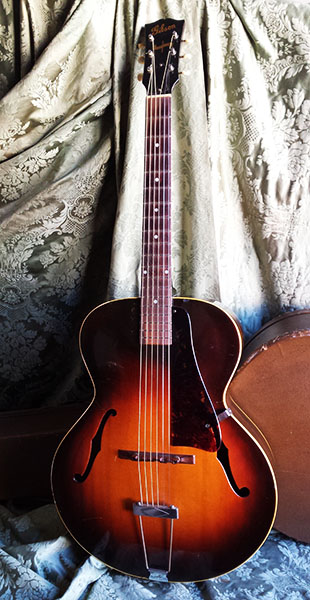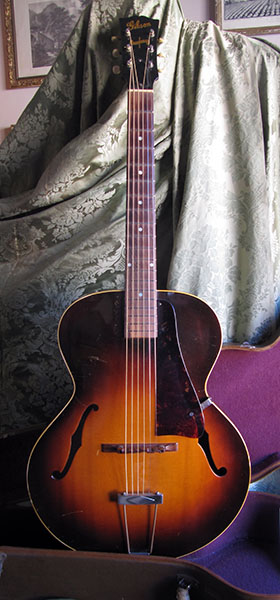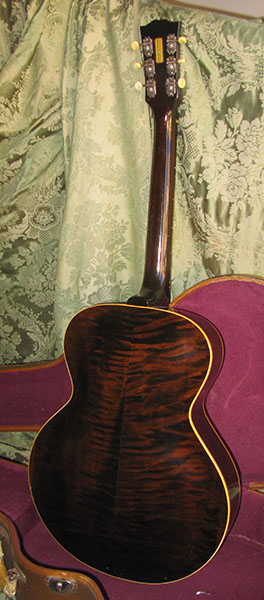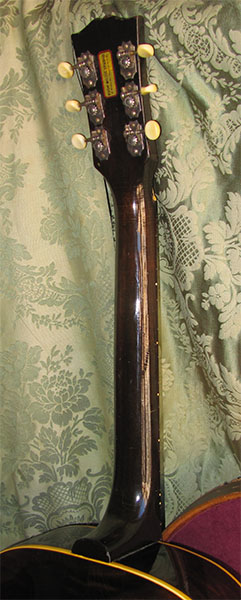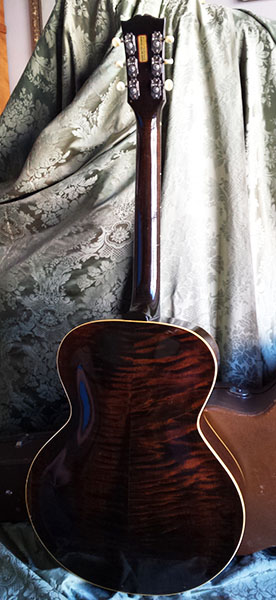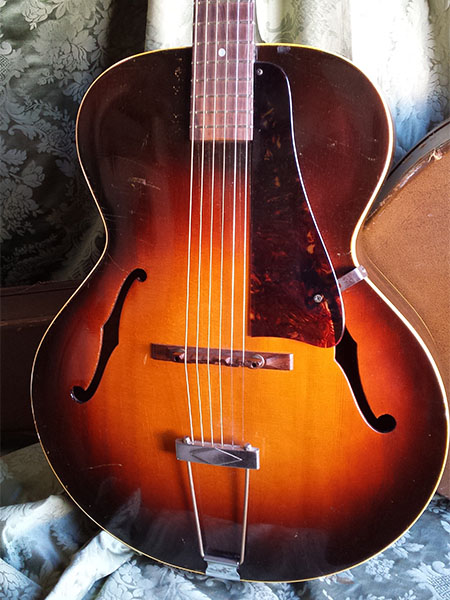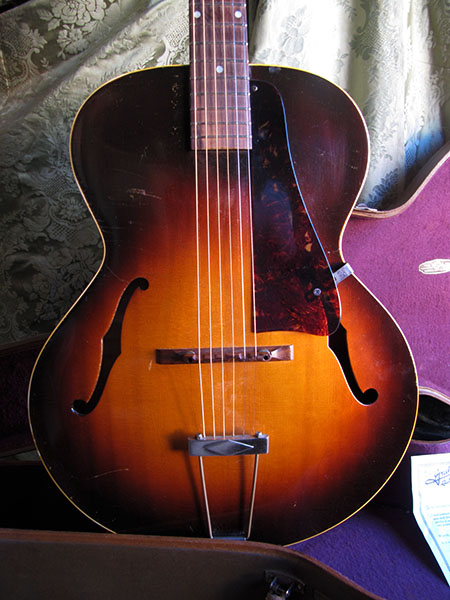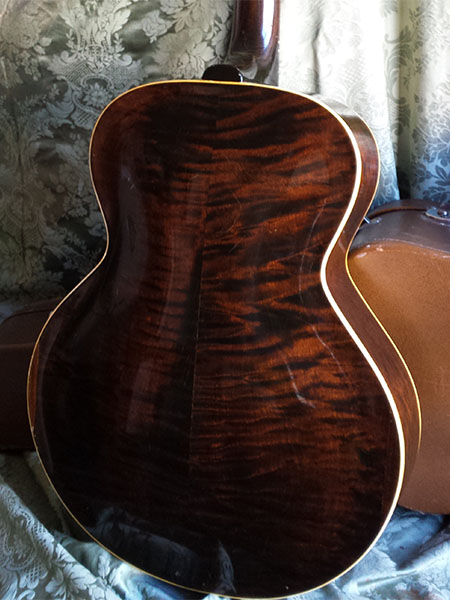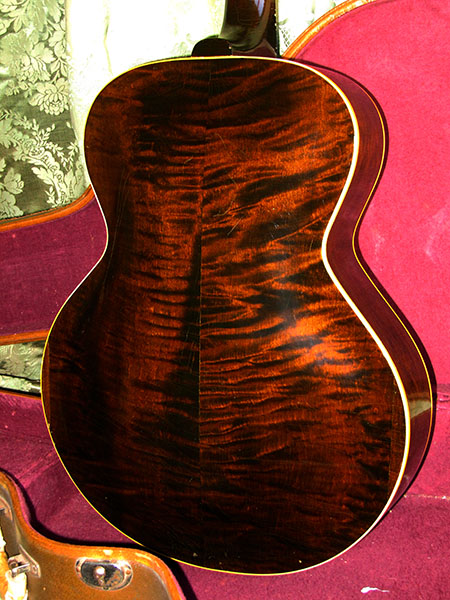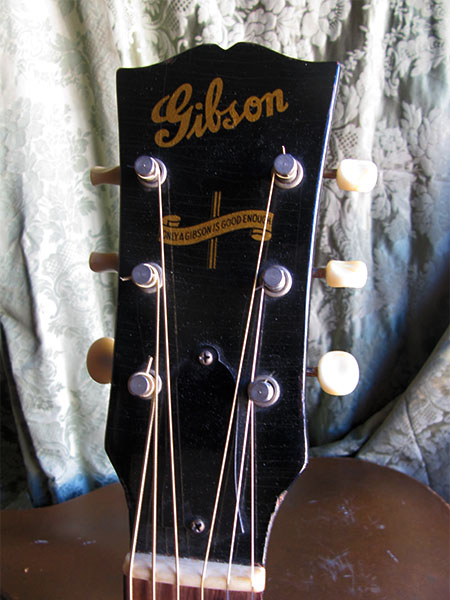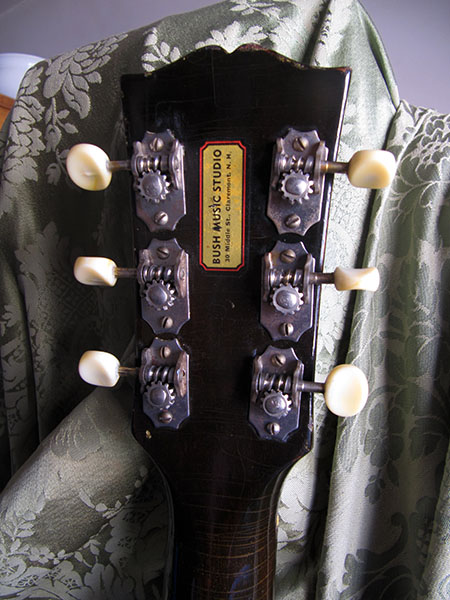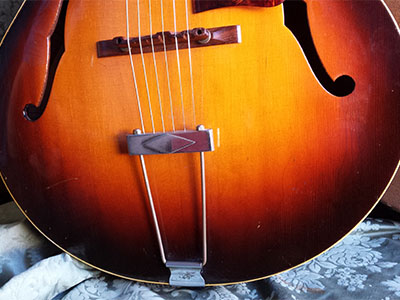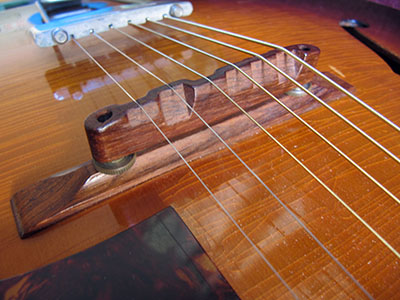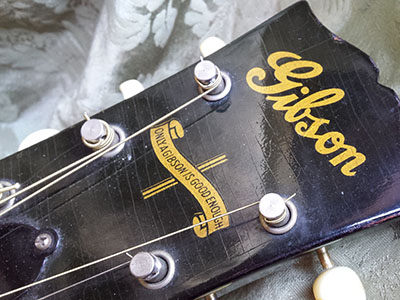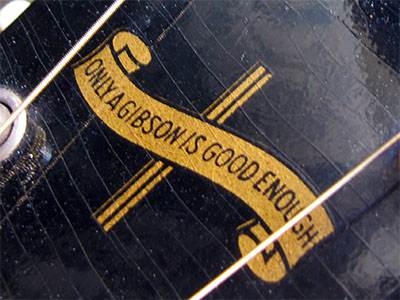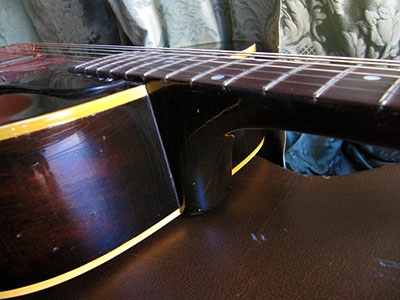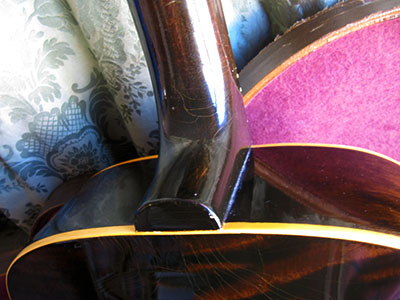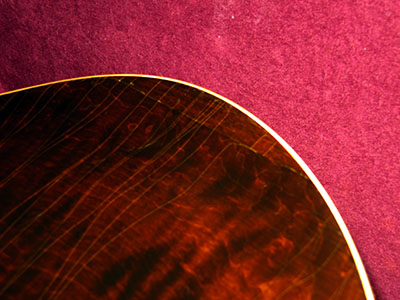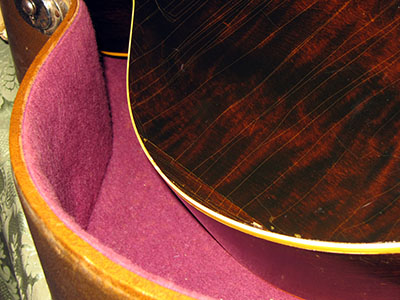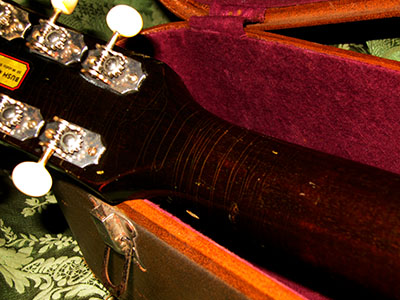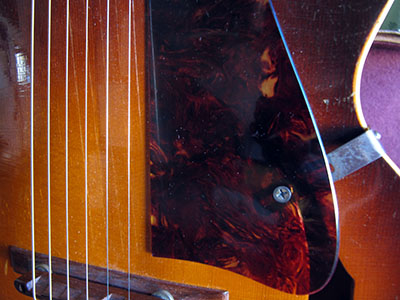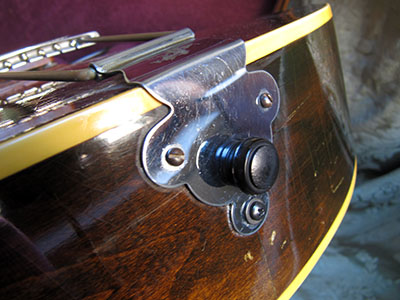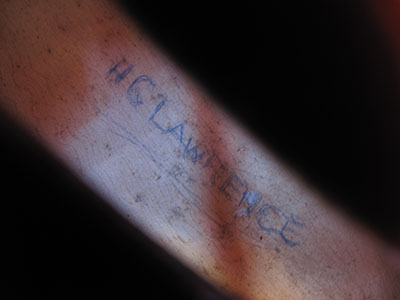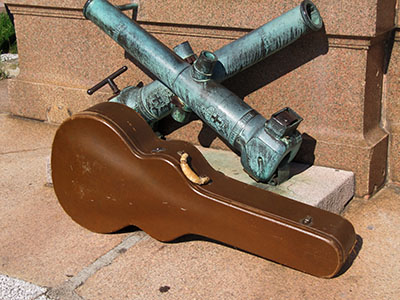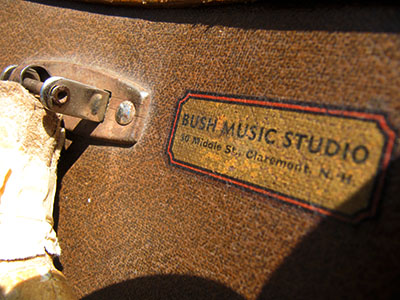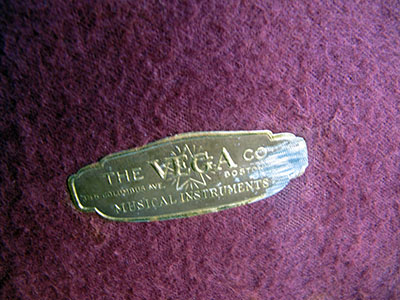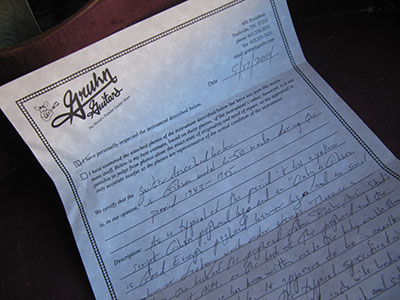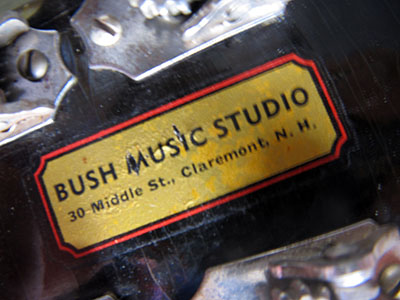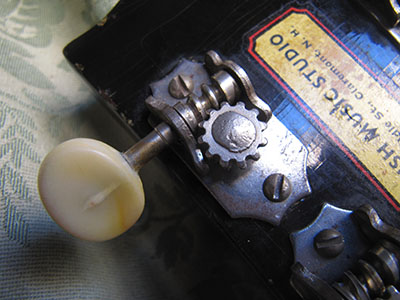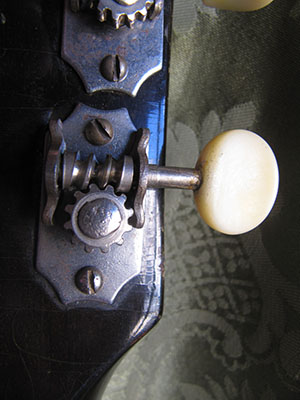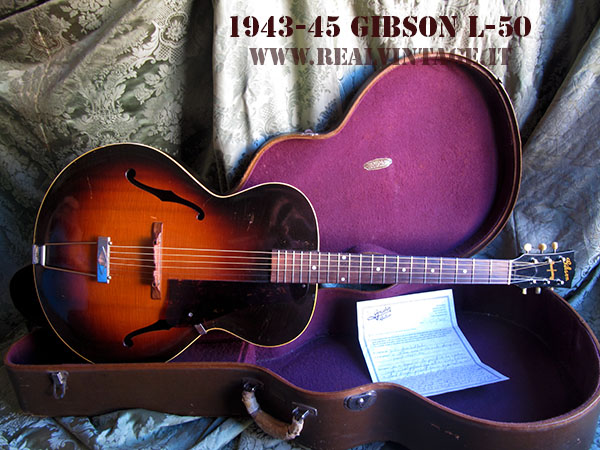

|
GIBSON L-50, 1943-45 Among Gibson guitars, the L-50 boasts a long history, with the same model's name given to radically different instruments for both typology and construction: from round sound-hole to f-holes, from flat to arched back, from smaller to larger body-size, the L-50 stands in an intermediate position between the cheaper student-grade models and the more expensive professional guitars. Built during World War II, this guitar embodies the most prestigious version of the model, with a 100% solid-wood construction with carved-spruce top and carved-maple back, one-piece mahogany neck with truss-rod, and rosewood fingerboard and bridge. The headstock shows the silkscreened "banner logo" typical of the period, with the "Only a Gibson is Good Enough" motto. War-time guitars are often characterized by features imposed more by the hard times than by marketing or construction choices, so they often show unusual solutions - and not necessarily negative ones. This L-50 still has the correct metal trapeze tailpiece, without the wooden cross-bar usually found on war-time models due to metal shortage, but what's more surprising is the high-quality wood used for the back of the body. The heavily flamed maple, although not carefully "bookmatched", is stunning. At the same time, the total width of the two halves was not enough to reach the 16" of the body, so we see two more stripes of maple added at both sides of the lower bout. Yes, we'd never see that on an L-5, an L-7 or any other professional-grade instrument, but such solution must have been considered good enough for a "war-time" L-50. Another "cheaper" solution which differs from the higher-grade Gibson archtops is the neck-body joint: the fingerboard extension is not elevated from the top of the guitar, but glued to it instead, which reduces a bit the vibrating area of the sound-board. The guitars of this intermediate-grade have no serial number, so we can tell the year of production by its specs, such as the logo. Through the f-hole we can see the ink-written name of the original owner, a H.G. Lawrence who purchased the guitar in the '40s in Claremont, New Hampshire, at Bush Music Studio: a shop's label is glued both to the back of the headstock and the hardshell case. Such detail reveals that the latter, although originally produced for a Vega archtop, has always been with this guitar since it first left the shop. All the hardware is original, from the tortoise-plastic pickguard to the riveted-rod individual Kluson tuners, to the pre-compensated rosewood bridge. The finish is completely original, with a beautiful sunburst on the top and darker back, sides and neck. It's in great shape, with lots of nice checking and a few traces of playing wear. This guitar sounds really great, and can proudly stand any competition against a top-of-the-line archtop. Beautiful fretboard, perfect intonation and easy action. Sound, playability, beauty and rarity make of this L-50 a cheaper but classy alternative to the more expensive Gibson archtops. It comes with a certificate of originality signed by George Gruhn, who has personally inspected he guitar in 2004.
|
